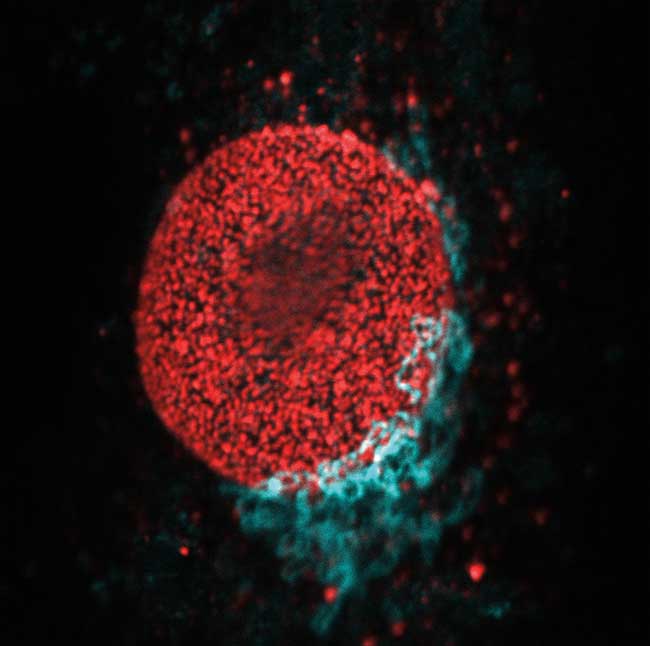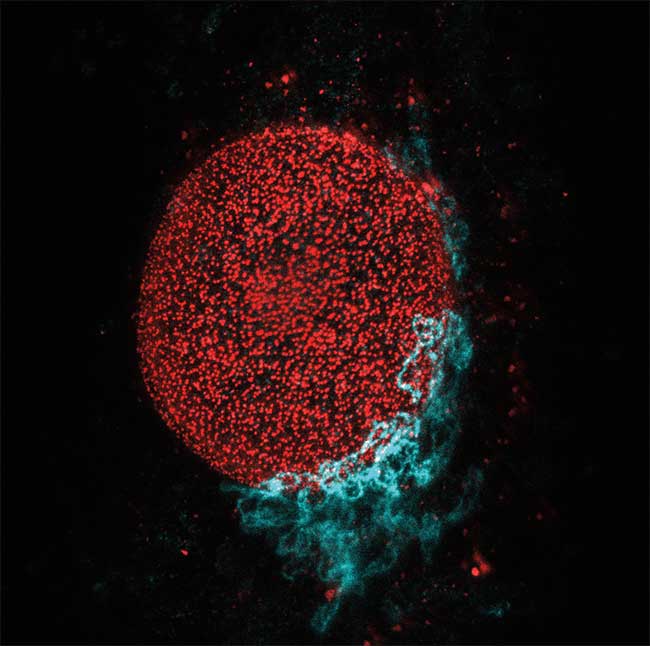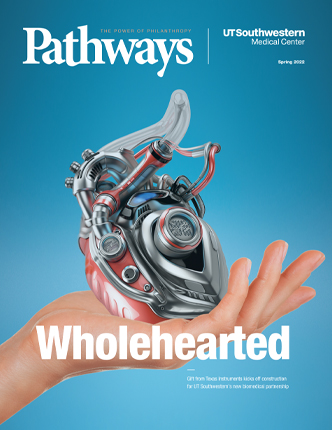Seeing With the Mind's Eye
Supported by philanthropy, innovative microscope technology is unlocking new views of the brain
Dedicated to the pursuit of discovery and innovation, JoAnn “Jodi” and Kent Foster’s generosity has long supported the advancement of biomedical knowledge at UT Southwestern Medical Center. Their latest gift ensures researchers who are doing big things to advance our understanding of the human brain can focus on even tinier details of how the brain works.
With a $5 million contribution from their Kent and JoAnn Foster Family Foundation, the couple supported the Peter O’Donnell Jr. Brain Institute’s purchase of a stimulated emission depletion (STED) microscope. The tool enables scientists to study the billions of cells, connections, and signals that make up the brain’s inner workings. Made possible by gifts from multiple foundations, the technology gives scientists new capabilities to study brain diseases, potentially unlocking new information about conditions such as Alzheimer’s and Parkinson’s diseases.


The couple was inspired to give in support of the Campaign for the Brain, UT Southwestern’s fundraising initiative that surpassed its goal of investing $1 billion in the O’Donnell Brain Institute.
“We are deeply grateful for Jodi and Kent Foster’s remarkable generosity over many years,” said Daniel K. Podolsky, M.D., President of UT Southwestern. “This most recent gift has brought to UT Southwestern a powerful new tool for understanding brain structure and function. Insights made possible by this special microscope will advance our ultimate goal of better means of treatment and prevention of brain diseases.”

STED microscopy is considered one of the newest super-resolution microscope technologies. Using dual-laser beams, scientists can visualize the brain with a vivid level of detail, looking at specimens that are 20 to 50 nanometers in size. It’s a shockingly small distance – imagine something 2,000 times smaller than a human hair or about 20 times larger than a single strand of human DNA. At this scale, scientists can see individual molecules that make up brain synapses – the junctions between nerve cells – as well as other structures and features of neurons, the building blocks of the nervous system.
Through their philanthropy, the Fosters have provided UT Southwestern scientists and clinicians with leading-edge research tools while modeling the value of community giving for future generations of their family.
The couple met in Japan while both were serving in the U.S. Air Force. Mr. Foster later joined GTE Corp. and spent 29 years in various positions before becoming the company’s President. After retiring, he joined Ingram Micro, a global technology and supply chain services company, where he served as Chairman and CEO until he retired again.
In addition to supporting diabetes and genetics research, the couple has established endowed faculty positions in internal medicine, medical ethics, and endocrinology at UTSW, including the Kent and Jodi Foster Distinguished Chair in Endocrinology, in Honor of Daniel Foster, M.D. They have also committed a planned gift from their estate to support the O’Donnell Brain Institute.
Dr. Podolsky holds the Philip O’Bryan Montgomery, Jr., M.D. Distinguished Presidential Chair in Academic Administration, and the Doris and Bryan Wildenthal Distinguished Chair in Medical Science.

